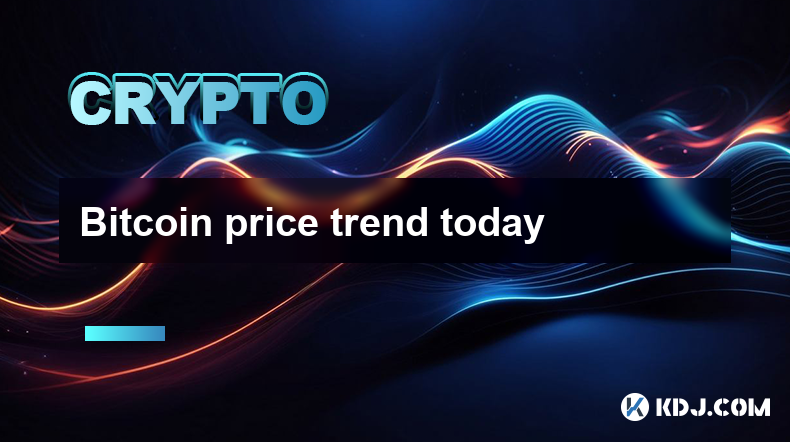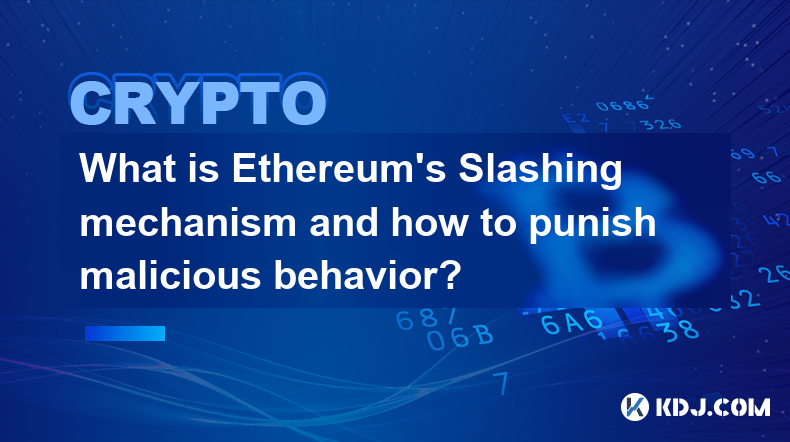-
 Bitcoin
Bitcoin $84,380.9629
-0.68% -
 Ethereum
Ethereum $1,587.8040
0.39% -
 Tether USDt
Tether USDt $0.9997
0.02% -
 XRP
XRP $2.0611
-0.10% -
 BNB
BNB $592.1695
0.41% -
 Solana
Solana $134.0171
-0.42% -
 USDC
USDC $1.0000
0.00% -
 Dogecoin
Dogecoin $0.1576
1.44% -
 TRON
TRON $0.2401
-3.06% -
 Cardano
Cardano $0.6295
2.16% -
 UNUS SED LEO
UNUS SED LEO $9.2244
1.69% -
 Chainlink
Chainlink $12.5592
0.40% -
 Avalanche
Avalanche $19.0618
0.03% -
 Toncoin
Toncoin $2.9920
1.85% -
 Stellar
Stellar $0.2398
0.17% -
 Shiba Inu
Shiba Inu $0.0...01228
4.28% -
 Hedera
Hedera $0.1653
1.46% -
 Sui
Sui $2.1201
-0.04% -
 Bitcoin Cash
Bitcoin Cash $335.2957
0.47% -
 Polkadot
Polkadot $3.6693
0.93% -
 Litecoin
Litecoin $75.9657
1.55% -
 Hyperliquid
Hyperliquid $17.0326
-0.70% -
 Dai
Dai $1.0000
0.01% -
 Bitget Token
Bitget Token $4.4071
0.71% -
 Ethena USDe
Ethena USDe $0.9992
0.02% -
 Pi
Pi $0.6423
4.69% -
 Monero
Monero $215.4419
-0.65% -
 Uniswap
Uniswap $5.1801
0.13% -
 Pepe
Pepe $0.0...07322
1.11% -
 OKB
OKB $50.2807
-0.70%
Bitcoin price trend today
Understanding factors influencing Bitcoin price, such as supply and demand, halving events, competition from altcoins, and government regulations, is crucial for predicting price movements.
Feb 09, 2025 at 04:00 am

Key Points
- Understanding the Factors Influencing Bitcoin Price
- Analyzing Technical Indicators for Price Prediction
- Forecasting Bitcoin Price Movements Using Historical Patterns
- Assessing Market Sentiment and News Impact
- Developing a Comprehensive Trading Strategy for Bitcoin
Understanding the Factors Influencing Bitcoin Price
Bitcoin's price is primarily driven by a complex interplay of factors, including:
- Supply and Demand: The scarcity of Bitcoin, with a limited supply of 21 million coins, and its growing demand from investors and institutions, influence its price movements.
- Halving Events: Every four years, Bitcoin undergoes a halving event, which reduces the block reward for miners and limits the supply of new coins, potentially boosting the price.
- Competition from Altcoins: The emergence of altcoins, such as Ethereum and Litecoin, can compete with Bitcoin's market dominance, affecting its price volatility.
- Government Regulations: Governments and regulatory bodies worldwide can implement policies that impact Bitcoin's legality and accessibility, influencing its price stability.
Analyzing Technical Indicators for Price Prediction
Technical analysis involves using chart patterns, indicators, and trading tools to forecast price movements. Common technical indicators include:
- Moving Averages: These average past prices over a specific period to identify trends and support or resistance levels.
- Relative Strength Index (RSI): This indicator measures market sentiment and potential reversal points by comparing the magnitude of recent gains and losses.
- Bollinger Bands: These bands represent the standard deviation of prices around a moving average, indicating potential volatility and breakout opportunities.
- Fibonacci Retracements: These levels identify potential support and resistance areas based on the Fibonacci sequence.
Forecasting Bitcoin Price Movements Using Historical Patterns
Analyzing historical price data can provide insights into potential future patterns. Key historical milestones and events to consider include:
- Previous Bull and Bear Markets: Studying past market cycles can help identify potential turning points and breakout zones.
- Seasonality: Seasonality effects, such as increased volatility around halving events or end-of-year tax sales, can influence price movements.
- Price Bubbles: Recognizing historical price bubbles and crashes can help avoid excessive gains or losses.
- Correlation with Traditional Markets: Correlation with traditional financial markets, such as stock indices or gold, can impact Bitcoin's price movements.
Assessing Market Sentiment and News Impact
Market sentiment, influenced by news, social media chatter, and expert opinions, plays a significant role in price fluctuations. Sentiment analysis includes:
- Social Media Listening: Monitoring discussions on social media platforms can gauge public opinion and emotional sentiment.
- News Analysis: Analyzing news articles and market commentaries provides insights into industry developments, regulatory changes, and adoption trends.
- Fear and Greed Index: This index measures market fear or greed based on seven indicators, providing an indication of potential price swings.
- Crowdsourcing Sentiment: Collecting opinions and forecasts from the broader cryptocurrency community can offer collective insights.
Developing a Comprehensive Trading Strategy for Bitcoin
A comprehensive trading strategy for Bitcoin should incorporate multiple perspectives and techniques:
- Diversify Portfolio: Allocating funds across different cryptocurrencies can mitigate risk and enhance returns.
- Dollar-Cost Averaging: Gradual investments over time can reduce volatility impact and accumulate Bitcoin at favorable prices.
- Technical Analysis: Implementing technical indicators and chart patterns to predict price movements and identify potential entry and exit points.
- Sentiment Analysis: Monitoring market sentiment and news to assess market confidence and potential price shifts.
- Risk Management: Setting stop-loss orders, managing fund allocation, and hedging against potential downturns are crucial for risk mitigation.
FAQs
Q: What are the key factors influencing Bitcoin price today?
A: Supply and demand, halving events, competition from altcoins, government regulations, and market sentiment.
Q: Which technical indicators are commonly used to predict Bitcoin price movements?
A: Moving averages, Relative Strength Index (RSI), Bollinger Bands, and Fibonacci retracements.
Q: How can I use historical patterns to forecast Bitcoin price?
A: Analyze previous bull and bear markets, consider seasonality effects, identify price bubbles, and assess correlation with traditional markets.
Q: How do I assess market sentiment and news impact on Bitcoin price?
A: Monitor social media, analyze news articles, track the Fear and Greed Index, and collect opinions from the cryptocurrency community.
Q: What are the essential elements of a comprehensive trading strategy for Bitcoin?
A: Diversifying portfolio, dollar-cost averaging, technical analysis, sentiment analysis, and risk management.
Disclaimer:info@kdj.com
The information provided is not trading advice. kdj.com does not assume any responsibility for any investments made based on the information provided in this article. Cryptocurrencies are highly volatile and it is highly recommended that you invest with caution after thorough research!
If you believe that the content used on this website infringes your copyright, please contact us immediately (info@kdj.com) and we will delete it promptly.
- BNB Buying Demand Rises as Market Sentiment Turns Positive
- 2025-04-19 08:20:16
- FUR PFP Campaign
- 2025-04-19 08:20:16
- The legal fight against crypto exchanges flares up again
- 2025-04-19 08:15:13
- Presidential Crypto Advisory Committee Head Bo Hines Highlights Ways the United States Could Improve Its Bitcoin (BTC) Reserves
- 2025-04-19 08:15:13
- Prominent Bitcoin Pundit Davinci Jeremic Has Shared a Bullish Outlook for XRP Despite His Long-Standing Reservations About the Ripple-Linked Coin
- 2025-04-19 08:10:15
- Broncos Give 2025 Reaches Nearly 1200 Donors
- 2025-04-19 08:10:15
Related knowledge

What is Ethereum’s Slashing mechanism and how to punish malicious behavior?
Feb 20,2025 at 03:08am
Key PointsOverview of slashingDifferent types of slashing in EthereumIncentives and consequences of slashingIdentifying and reporting slashed validatorsOngoing discussions and potential improvementsEthereum's Slashing Mechanism: Punishing Malicious BehaviorEthereum's slashing mechanism is an essential tool for ensuring network security and punishing mal...

What is the verifier node of Ethereum and how to become a verifier?
Feb 19,2025 at 06:00pm
The Verifier Node of Ethereum: A Comprehensive GuideKey Points:What is a Verifier Node?How to Become a Verifier NodeResponsibilities and Rewards of a Verifier NodeMinimum Requirements for Becoming a Verifier NodePotential Difficulties in Running a Verifier Node1. What is a Verifier Node?A Verifier Node is an independent entity on the Ethereum network th...

What is Ethereum’s staking, and how to participate and earn money?
Feb 19,2025 at 04:37pm
Key Points:Understanding Ethereum's Staking MechanismSteps to Participate in StakingBenefits and Rewards of StakingSecurity and Risk ConsiderationsTechnical Requirements and Hardware OptionsPotential Challenges and Troubleshooting TipsFAQs on Ethereum StakingWhat is Ethereum's Staking?Proof-of-Stake (PoS) is a consensus mechanism used in blockchain netw...

What is Ethereum’s DAO (Decentralized Autonomous Organization) and how does it work?
Feb 20,2025 at 03:12am
Key PointsDefinition and Structure of a DAOGovernance and Decision-Making in DAOsBenefits and Use Cases of DAOsChallenges and Limitations of DAOsWhat is Ethereum's DAO (Decentralized Autonomous Organization) and How Does It Work?Definition and Structure of a DAOA Decentralized Autonomous Organization (DAO) is an innovative governance and management fram...

What is Ethereum's multi-signature wallet and how to improve security?
Feb 20,2025 at 02:18pm
Key Points:Understanding the Concept of a Multi-Signature WalletBenefits and Drawbacks of Multisig WalletsRequirements for Setting Up a Multisig WalletStep-by-Step Guide to Generating a Multisig WalletImplementing Strategies for Enhanced Security1. Understanding the Concept of a Multi-Signature WalletA multi-signature (multisig) wallet in the Ethereum e...

What is Ethereum's oracle and how to provide data for smart contracts?
Feb 21,2025 at 01:30am
Key Points:Understanding the concept of oracles in EthereumExploring different types of oraclesDetailed guide on how to provide data for smart contractsAddressing potential challenges and considerationsWhat is Ethereum's Oracle?Oracles are crucial components in the Ethereum ecosystem, enabling smart contracts to access real-world data and off-chain even...

What is Ethereum’s Slashing mechanism and how to punish malicious behavior?
Feb 20,2025 at 03:08am
Key PointsOverview of slashingDifferent types of slashing in EthereumIncentives and consequences of slashingIdentifying and reporting slashed validatorsOngoing discussions and potential improvementsEthereum's Slashing Mechanism: Punishing Malicious BehaviorEthereum's slashing mechanism is an essential tool for ensuring network security and punishing mal...

What is the verifier node of Ethereum and how to become a verifier?
Feb 19,2025 at 06:00pm
The Verifier Node of Ethereum: A Comprehensive GuideKey Points:What is a Verifier Node?How to Become a Verifier NodeResponsibilities and Rewards of a Verifier NodeMinimum Requirements for Becoming a Verifier NodePotential Difficulties in Running a Verifier Node1. What is a Verifier Node?A Verifier Node is an independent entity on the Ethereum network th...

What is Ethereum’s staking, and how to participate and earn money?
Feb 19,2025 at 04:37pm
Key Points:Understanding Ethereum's Staking MechanismSteps to Participate in StakingBenefits and Rewards of StakingSecurity and Risk ConsiderationsTechnical Requirements and Hardware OptionsPotential Challenges and Troubleshooting TipsFAQs on Ethereum StakingWhat is Ethereum's Staking?Proof-of-Stake (PoS) is a consensus mechanism used in blockchain netw...

What is Ethereum’s DAO (Decentralized Autonomous Organization) and how does it work?
Feb 20,2025 at 03:12am
Key PointsDefinition and Structure of a DAOGovernance and Decision-Making in DAOsBenefits and Use Cases of DAOsChallenges and Limitations of DAOsWhat is Ethereum's DAO (Decentralized Autonomous Organization) and How Does It Work?Definition and Structure of a DAOA Decentralized Autonomous Organization (DAO) is an innovative governance and management fram...

What is Ethereum's multi-signature wallet and how to improve security?
Feb 20,2025 at 02:18pm
Key Points:Understanding the Concept of a Multi-Signature WalletBenefits and Drawbacks of Multisig WalletsRequirements for Setting Up a Multisig WalletStep-by-Step Guide to Generating a Multisig WalletImplementing Strategies for Enhanced Security1. Understanding the Concept of a Multi-Signature WalletA multi-signature (multisig) wallet in the Ethereum e...

What is Ethereum's oracle and how to provide data for smart contracts?
Feb 21,2025 at 01:30am
Key Points:Understanding the concept of oracles in EthereumExploring different types of oraclesDetailed guide on how to provide data for smart contractsAddressing potential challenges and considerationsWhat is Ethereum's Oracle?Oracles are crucial components in the Ethereum ecosystem, enabling smart contracts to access real-world data and off-chain even...
See all articles
























































































